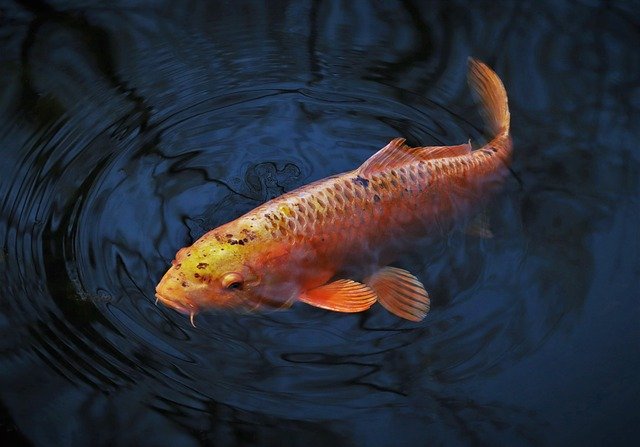Koi Carp: Aquatic Jewels with a Royal History
Koi carp, the living jewels of ornamental ponds, have captivated humans for centuries with their vibrant colors and graceful movements. These elegant fish, revered in Japanese culture and gaining popularity worldwide, have a fascinating history and complex care requirements. From their humble beginnings as food fish to their status as prized collectors' items, koi have undergone a remarkable transformation. This article delves into the world of koi carp, exploring their cultural significance, breeding techniques, and the art of koi keeping.

By the early 1800s, koi breeding had become a respected craft in Japan, particularly in the Niigata region. The first recorded red and white koi, known as Kohaku, appeared around 1870, marking a significant milestone in koi development. As word of these colorful carp spread, their popularity soared, and they transitioned from mere food fish to prized ornamental specimens.
The Cultural Significance of Koi
In Japanese culture, koi hold deep symbolic meaning. They are often associated with perseverance, strength, and good fortune. The legend of the koi fish swimming upstream and transforming into a dragon upon reaching the top of a waterfall is a popular metaphor for overcoming life’s obstacles. This symbolism has contributed to the koi’s elevated status in Japanese art, literature, and garden design.
Koi have also become a symbol of friendship and goodwill between nations. In 1914, Crown Prince Hirohito of Japan gifted koi to the Emperor of China, further cementing their diplomatic significance. Today, koi ponds are found in Japanese gardens worldwide, serving as living ambassadors of Japanese culture and aesthetics.
The Art and Science of Koi Breeding
Koi breeding is a complex process that combines artistry with scientific precision. Breeders must have a deep understanding of genetics, water quality management, and fish health to produce high-quality specimens. The goal is to create koi with vibrant colors, distinct patterns, and ideal body shapes.
There are over 100 recognized varieties of koi, each with specific color patterns and characteristics. Some of the most popular varieties include:
-
Kohaku: White body with red markings
-
Sanke: White body with red and black markings
-
Showa: Black body with red and white markings
-
Butterfly Koi: Long-finned varieties with flowing, graceful fins
Breeding for these specific traits requires careful selection of parent fish and meticulous record-keeping. It can take years of selective breeding to develop a stable line of koi with desirable characteristics.
The Economics of Koi: From Hobbyists to High-End Collectors
The koi industry has grown significantly in recent decades, with fish prices ranging from a few dollars for young, common varieties to hundreds of thousands of dollars for champion-quality specimens. In 2018, a grand champion koi named S Legend sold for a record-breaking 203 million yen (approximately $1.8 million USD) at an auction in Japan, highlighting the extreme high end of the market.
For hobbyists and enthusiasts, setting up a koi pond can be a substantial investment. A basic pond setup, including filtration and aeration systems, can cost between $5,000 to $15,000. High-end, professionally designed koi ponds can easily exceed $50,000. The fish themselves vary widely in price, with quality young koi starting around $50 and show-quality adults fetching thousands of dollars.
The Challenges and Rewards of Koi Keeping
Maintaining a healthy koi pond requires dedication, knowledge, and ongoing effort. Koi are sensitive to water quality changes and susceptible to various diseases, making proper care essential. Key aspects of koi keeping include:
-
Water quality management: Regular testing and maintenance of pH, ammonia, nitrite, and nitrate levels
-
Filtration: Implementing effective mechanical and biological filtration systems
-
Feeding: Providing a balanced diet appropriate for the season and fish size
-
Health monitoring: Regular observation for signs of illness or stress
-
Predator protection: Safeguarding koi from birds, raccoons, and other potential predators
Despite these challenges, koi keeping can be incredibly rewarding. Many enthusiasts find peace and tranquility in observing their living works of art. The hobby also fosters a sense of community, with koi clubs and shows bringing together people from diverse backgrounds who share a passion for these magnificent fish.
The Future of Koi: Conservation and Innovation
As koi popularity continues to grow globally, there are increasing concerns about the environmental impact of non-native koi populations. In some regions, escaped or released koi have established themselves in natural waterways, potentially competing with native species. This has led to calls for responsible ownership and stricter regulations on koi keeping in certain areas.
On the innovation front, advancements in genetics and breeding techniques are pushing the boundaries of koi development. Some breeders are experimenting with new color combinations and patterns, while others focus on improving the health and longevity of koi strains. Additionally, technologies like underwater cameras and smartphone-controlled pond management systems are making koi keeping more accessible to a wider audience.
As we look to the future, the world of koi continues to evolve, blending centuries-old traditions with modern science and technology. These living jewels, with their rich history and cultural significance, remain a testament to the enduring bond between humans and the natural world.




